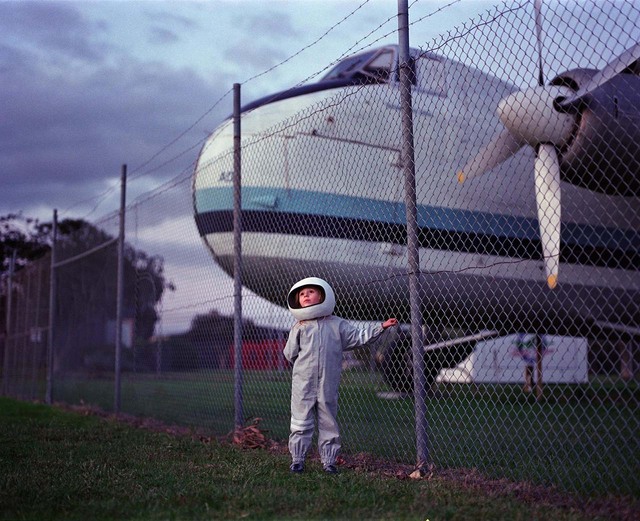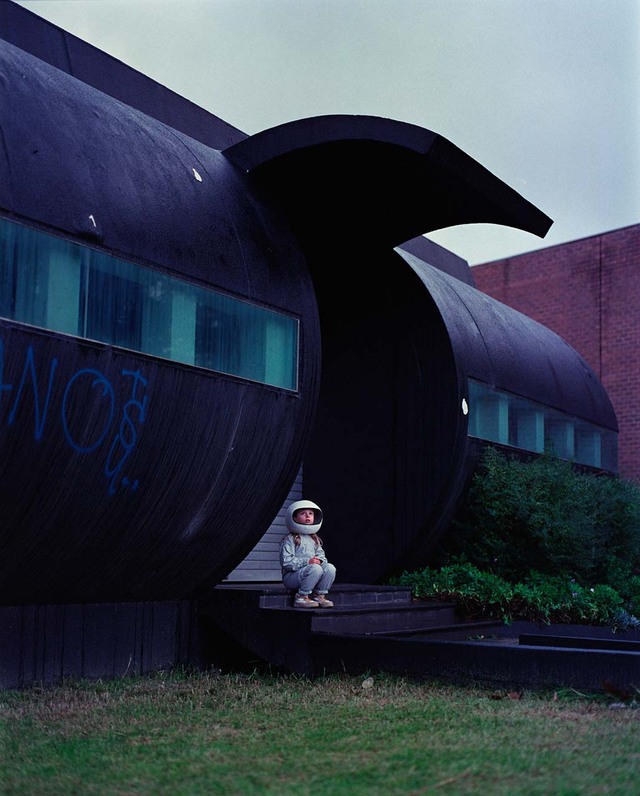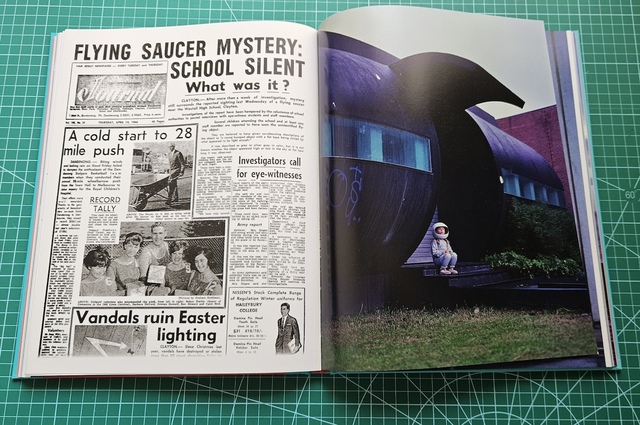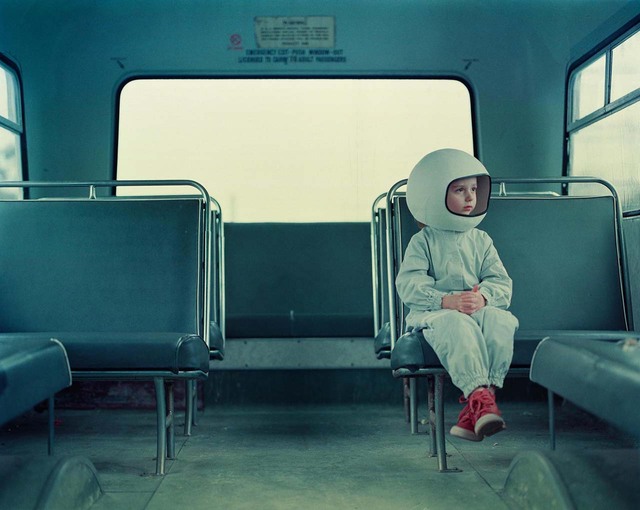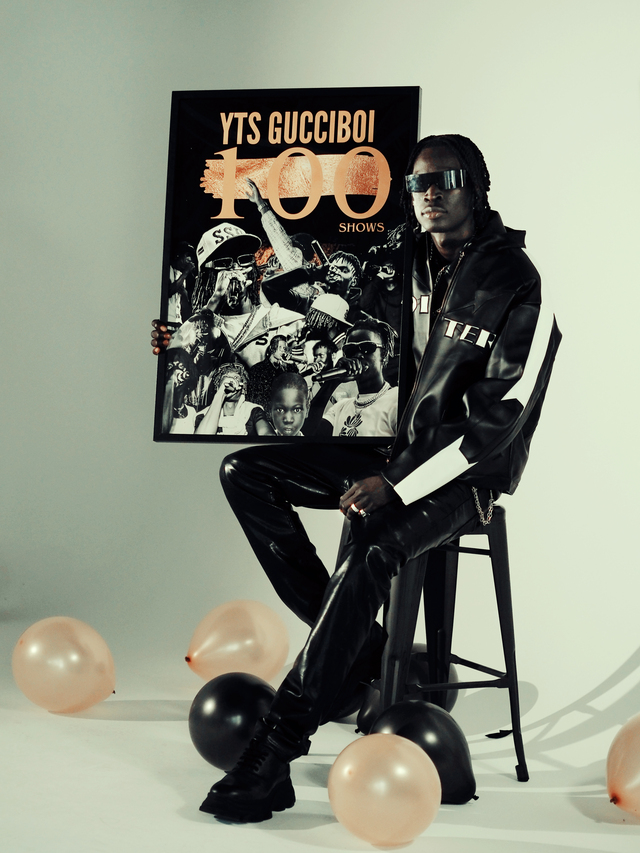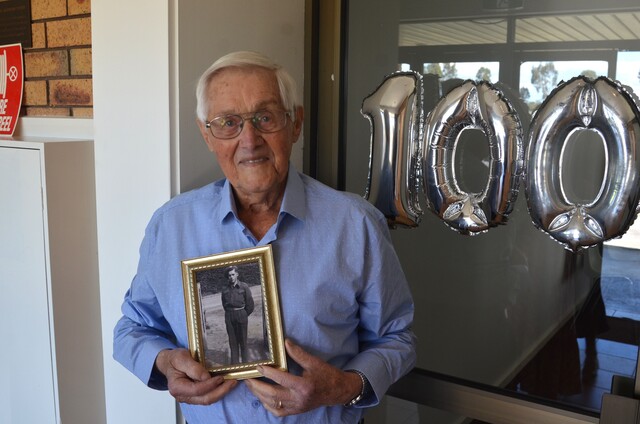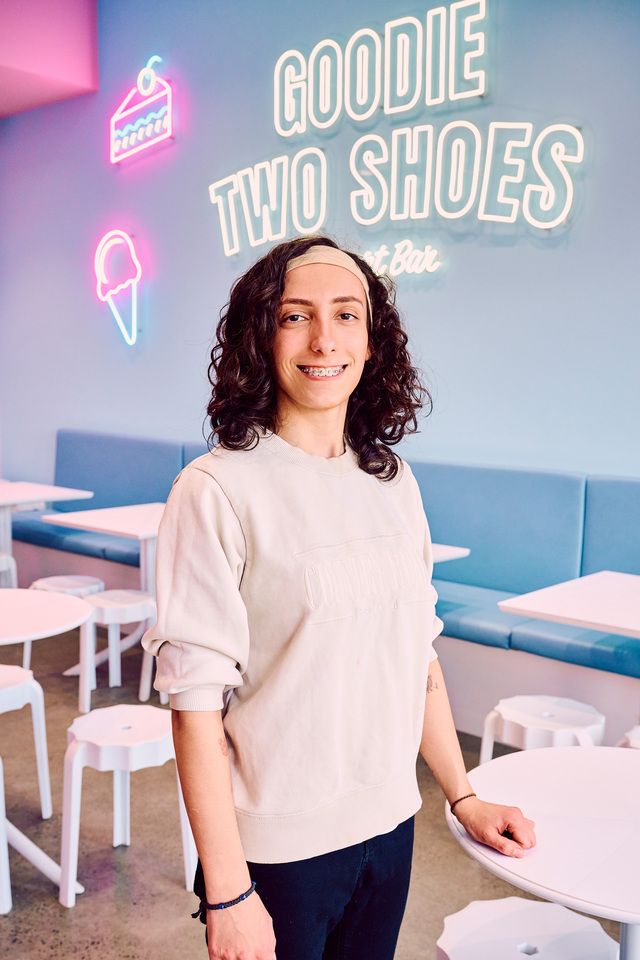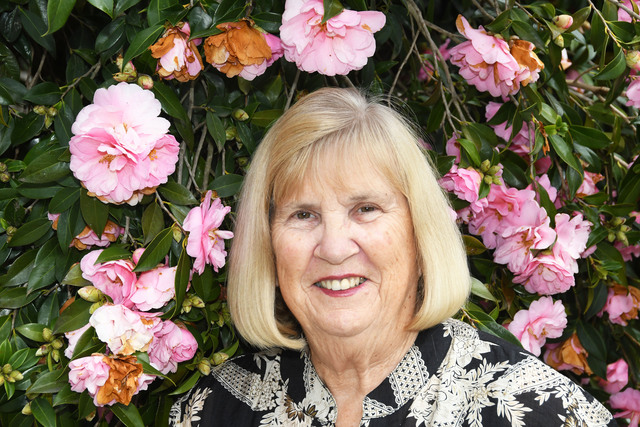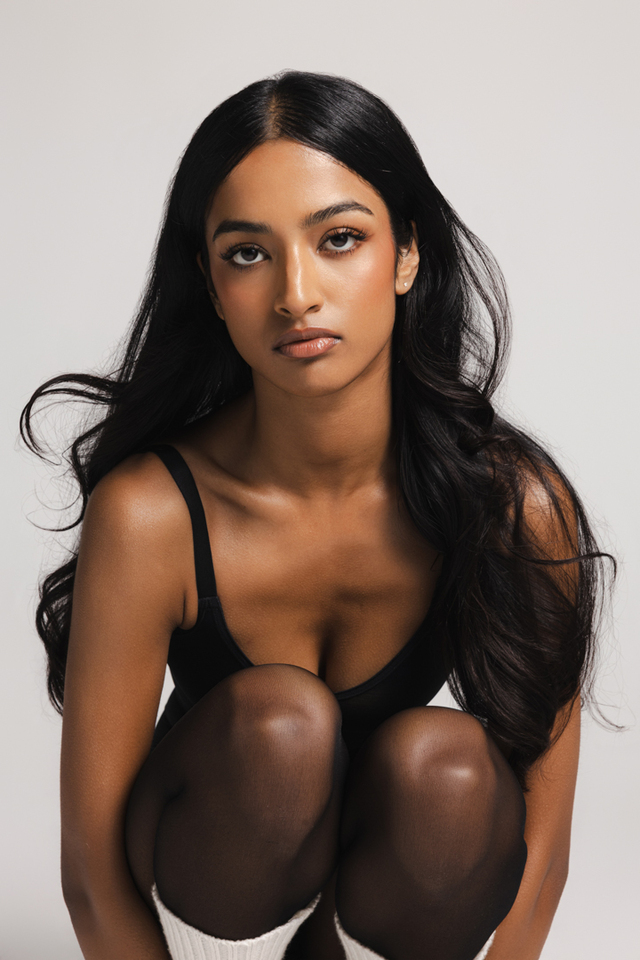A Covid lockdown family project unlocked a poignant ‘Rocketgirl’ adventure for Andrew Rovenko and his 4-year-old daughter Mia.
Craft was one of the family’s most popular pastimes in the long hours at home during Melbourne’s sixth lockdown in late 2021.
Picking up on Mia’s love of the planets, stars and outer space, her mother – a theatre costume designer – made Mia an astronaut helmet out of papier mache.
Rovenko then took photos of his helmeted daughter in nearby abandoned places, beaches and familiar spots like Moorabbin Air Museum and the former Atari ‘UFO building’ in Clayton.
“The pandemic brought quiet time to everything. Even in those two hours a day to explore the world, there was no traffic and nothing over-crowded.
“We explored these strange, weird places.”
His Instagram photos drew instant acclaim from friends and strangers near and far.
Rovenko at first thought that people were just desperate for a “feel-good story” at the time.
“A lot of people saw themselves as Mia going against the world. That lonely figure, that world we are navigating feels alienating sometimes.
“People reflect back to their childhood memories and how they imagined they used to be.”
And so begun a wildly popular ‘Rocketgirl’ series, with a glittering array of exhibitions and awards such as Australian Photography Magazine Photographer of the Year, Tokyo International Foto Awards and Prix de la Photographie Paris.
“It’s been over two years since the project became real and I still can’t believe it.
“It was not meant for fame. It was a family thing.
“It’s a great thing to see people get inspired by something you created. I’m a bit shy but at the same time, so many people shared so many nice words.”
Rovenko has now released a self-published book The Rocketgirl Chronicles which includes the photo series as well as Dandenong Journal’s most famous page-1 splash on the 1966 Westall UFO mystery.
Rovenko first saw the Journal page in a public library window – and it was like a “perfect match” that added a layer of “historical context” to his work.
“It’s one of those Australian UFO stories that is famous. I couldn’t help but find that connection.
“There’s a bit of nostalgia for the days when people remember being young.”
As a child growing up in Ukraine, Rovenko had adored his grandfather’s camera, which he was never allowed to touch. It became like a “forbidden fruit”, he says.
“As kids when we’re not allowed to have something we gravitate towards it.
“(My grandfather) developed all the films himself and it exposed me to the medium and the process.”
He has long collected “old-school” film cameras, which captured the nostalgic Rocketgirl series.
“I love the craft.
“Everything is becoming disposable and fast-paced – you don’t feel in the moment.
“But when you shoot with an old camera with light meters and manual focus, you are immersed in the moment.”
The colours are different through these ancient lenses, he says.
“You see the world the way it used to be seen 100 years ago. It’s like a time-machine in the way it transports you back into an older world.”
His go-to colour development lab was shut down during the pandemic, so he used a make-shift dark room in his laundry at the time.
He ordered colour development chemicals online and employed a sous vide stick for temperature control.
In a strange way, Rovenko misses the incubator-like Covid lockdowns.
“It wasn’t the best time in the world for any of us or all of us. I never thought I’d spend so much time at home – I used to spend so much time in the office.
“This gave me the opportunity to spend time with Mia and become good friends. You don’t usually have that opportunity.
“As humans, we tend to forget the bad things and stick with the good things.”

